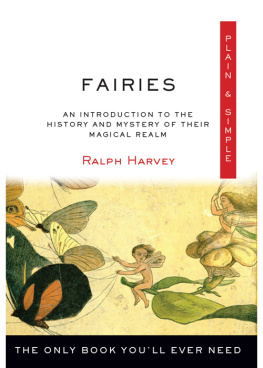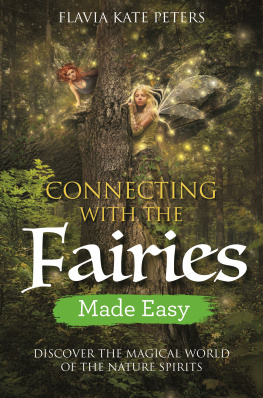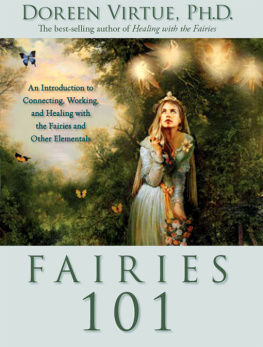

Copyright 2008, 2017
by Ralph Harvey
All rights reserved. No part of this publication may be reproduced or transmitted in any form or by any means, electronic or mechanical, including photocopying, recording, or by any information storage and retrieval system, without permission in writing from Hampton Roads Publishing Company, Inc. Reviewers may quote brief passages. This book was previously published as Simply Fairies by Sterling Publishing Co., Inc., New York
Cover design by Jim Warner
Cover art: Richard Doyle, illustration from In Fairyland, 1870
Interior design by Kathryn Sky-Peck
Hampton Roads Publishing Company, Inc.
Charlottesville, VA 22906
Distributed by Red Wheel/Weiser, LLC
www.redwheelweiser.com
Sign up for our newsletter and special offers by going to
www.redwheelweiser.com/newsletter
ISBN: 978-1-57174-782-2
Library of Congress Cataloging-in-Publication Data available upon request
Printed in Canada
MAR
10 9 8 7 6 5 4 3 2 1
Dedication
To my loving wife, Audrey, who read and edited each page and gave much helpful advicenot to mention traversing rough and rocky countryside to explore old deserted fairy sites and investigating those wild areas where they still existed. Like myself, she was profoundly affected by the ethereal experience in that Irish valley.
To the Honorable Olivia Robertson, Grainne, Petra Ginman, Georgina Angele, Lady Levanah, and Shell Bdolack.
To the late Stewart Farrar and Lord and Lady Strathloch.
To the Pook covens, who faithfully kept the old ways and still followed the fairy path.
To the Irish Druids, who attended Audrey's initiation into the Fellowship of Isis.
I heard along the early hills,
Ere yet the lark was risen up,
Ere yet the dawn with firelight fills
The nightdew of the bramble-cup,
I heard the fairies in a ring
Sing as they tripped a lilting sound
Soft as the moon on wavering wing.
The starlight shook as if with sound,
As if with echoing, and the stars
Franked their bright eyes with trembling gleams;
While red with war the gusty Mars
Rained upon earth his ruddy beams.
He shone alone, low down the West,
While I, behind a hawthorn-bush,
Watched on the fairies flaxen-tressed
The fires of the morning flush.
Till, as a mist, their beauty died,
Their singing shrill and fainter grew;
And daylight tremulous and wide
Flooded the moorland through and through;
Till Urdon's copper weathercock
Was reared in golden flame afar,
And dim from moonlight dreams awoke
The towers and groves of Arroar.
Walter de la Mare, The Fairies Dancing
Contents
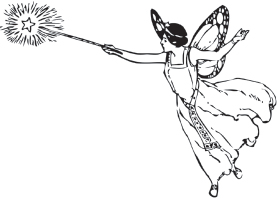
Part One:
The Magical Realm of Fairies
Part Two:
Fairy Lore
Part Three:
Entering the Fairy Realm

Part One
THE MAGICAL REALM OF FAIRIES
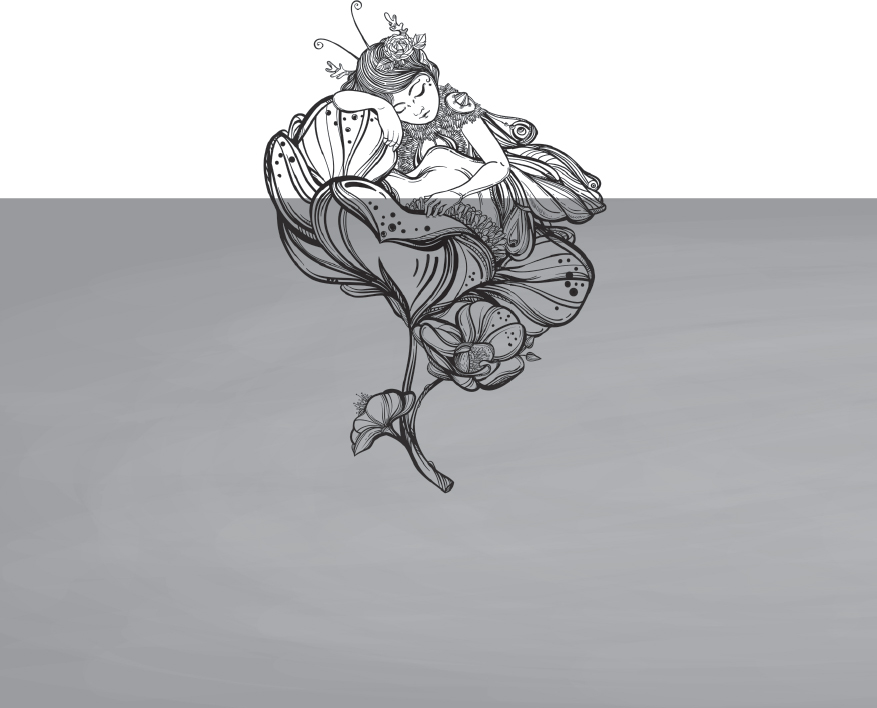
INTRODUCTION
An Introduction to Fairies
At a time that is not a time, In a place that is not a place, And on a day that is not a day.
OLD WICCAN ADAGE
F ashions come and go and so does belief in the things that people can and cannot see. Perfectly ordinary people experience strange things, and these events either become part of local folklore or are laughed away. What seems clear is that fairies, along with a host of other supernatural creatures, certainly do exist and that many millions of perfectly sane people hear them and sometimes see them. Stories about such creatures are common among those who live in rural areas and those whose countries are less developed. Thus, legends have been handed down in such varied places as Scandinavia, Europe, Ireland, Africa, Native American reservations, Eastern Europe, Russia, and just about everywhere else on the face of the earth. Fairies and other supernatural beings are part of the fabric of every undeveloped area on earthand a few developed ones as well.
Research makes it clear that British, Irish, and European fairies prefer to live in woodlands, near water, and particularly near willow trees, while other countries have their own legends. After all, there are no willow trees in the African bush and precious little water, yet supernatural beings definitely live there. There may be people reading this book who live in the deserts of Australia or the United States, and if so, you may fear that there are no fairies in your area. Not a bit of it. If your area is only lightly populated, there will definitely be small supernatural beings where you live. They may be a bit dustier than their woodland counterparts, and they probably prefer to wear sandy colors rather than woodland green as a natural camouflage, but they are definitely there!
It seems that supernatural beings have certain things in common. They don't like to be disturbed by humans, although they tolerate children, which is why children see such phenomena far more frequently than adults do. Many supernatural creatures are mischievous, and some are downright nasty, but some like to help mankind and are said to teach certain people how to use herbs for medicine and how to use magic.
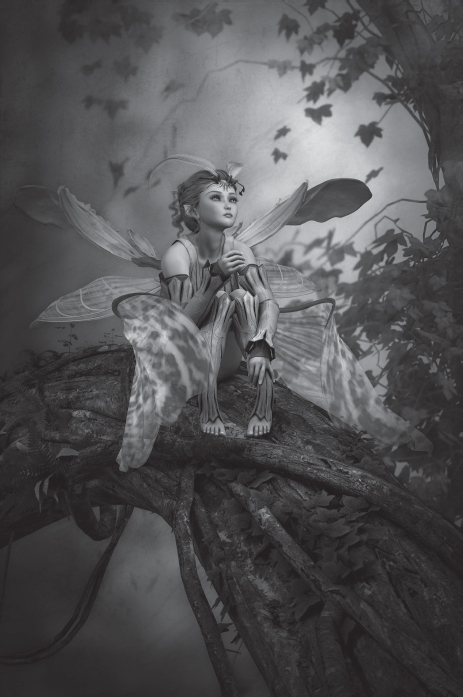
An artist's rendition of how we typically imagine fairies to look
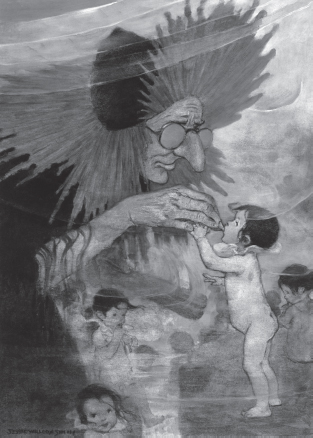
Supernatural beings are often drawn to children. (Illustration for Charles Kingsley's The Water Babies, by Jessie Willcox Smith, circa 1916; source Library of Congress).
Accidents will happen, and in every community children are either born with defects or don't develop properly. Many cultures believe that supernatural beings have interfered with these children in some way or even taken them away and put something strange in their place. You can imagine what happens to such children in these cultures! We know perfectly well that malevolent gnomes or hobgoblins aren't responsible for making children sick or disabled, because we understand the mechanics of these things. However, we also know what it's like to put something down somewhere only to find that it has vanished. Sometimes the lost article turns up again somewhere else. Legend has it that fairies take the item, play with it for a while, and then (if they are in a good mood) put it back again. This is especially the case with bright objects such as keys and jewels.
It is also perfectly possible for you to access fairies yourself and to call upon the help of a good-natured fairy or two to help you when you most need it. You will discover how to do this later in this book.
Next page
